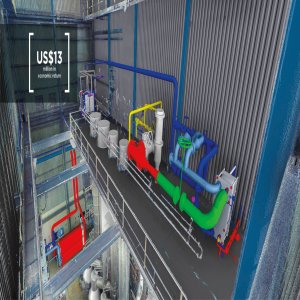Mexico’s Renewable Energy Foundation

STORY INLINE POST
Q: What contribution does NAFIN make to Mexico’s clean energy industry?
A: As financial engineers, we build bridges between the present and the future. Without the financing for projects that will benefit the country later, there would be no project and no benefit. Similarly, every project has two components: technology and finance. If the technical part is not resolved, having the capital serves no purpose. On the other hand, if the technical part is figured out and all the ideas are laid out but there is no money to put them together, there is no project. It is a binary situation wherein one part depends on the other.
Investment bankers also tend to be conservative when it comes to innovative projects, which is the case with renewable energy. There are always hurdles, such as the testing of disruptive technologies or acquiring rights of way to develop a project. Our job is to be a spearhead and in 2010, NAFIN and Bancomext became the first banks in Mexico to finance a renewable energy project. Today, NAFIN holds almost 10 percent of the total installed capacity of renewable projects in the country, which translates to nearly 5.6MW.
Q: What sustainable projects is NAFIN most interested in financing?
A: The power generated by renewable energy projects has to be incorporated into the National Electricity System. These power sources, like wind and solar, are intermittent and need to be complemented with natural gas plants, known as peakers, that can cope immediately with peak-demand hours. NAFIN’s mandate is to support the development of these technologies but if we limit ourselves to financing renewables, we would help achieve COP21’s goals but the national grid system would not have equilibrium. During the Peña Nieto administration, NAFIN financed 19 wind farms, seven solar parks, two mini-hydro plants, six natural gas plants and one transmission line.
Q: What are the most suitable financing vehicles for renewable energy projects?
A: CKDs and CERPIs are the preferred long-term investment vehicles. NAFIN manages MX$20 billion for Afores, with CERPIs used to invest abroad. FIBRAS, on the other hand, invest in projects with at least one year of operation.
NAFIN can help companies that want to develop clean energy projects, either with capital or with debt, at the beginning of a project or for a project that is already operating, and we can offer financial instruments according to the project’s needs. In the end, the project’s sponsor coordinates the financing efforts. If the sponsor prefers a determined structure through a CKD, part of its own capital and the participation of a commercial bank, we are more than open to support that.
Q: What are your recommendations for the new administration when it comes to the financing of these projects?
A: The most important recommendation is that Mexico continues to produce electricity according to the demands of small, medium and large-sized companies. SMEs represent 95 percent of Mexico’s economy and if we do not support them through cheap electricity prices, it could have a lasting impact on the country’s GDP. In this sense, renewable energy is a good option for achieving cheap prices without compromising the environment. NAFIN believes this is the way to go, although it must be combined with other technologies to ensure equilibration of its energy system. NAFIN targets a 10 percent share of the country’s total installed capacity. When I began working at NAFIN, we had a budget of MX$1.5 billion. Today, NAFIN works with a portfolio of MX$56 billion and half of this amount is invested in energy projects. This development will continue and the next administration has a very clear view about this.























